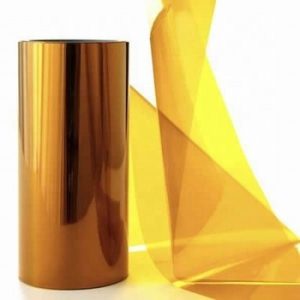Take you to understand the four new application areas of electronic grade PI materials
xinstAug 31, 2020
PI materials Polyimide film is a thin-film insulating material with leading performance in the world, and is called "gold film" in the industry. my country is one of the first countries to develop PI films. Today, PI films have a wide range of applications, including flexible displays, FPC, 5G mobile phones, semiconductor packaging, etc. In recent years, domestic FCCL companies (including foreign-invested companies in the mainland) have continuously increased their demand for electronic-grade PI films, which has also prompted new application areas.
Flexible display: flexible substrate, cover material and COF material
Flexible substrate
As OLED replaces LCD, it is moving in the direction of curved → foldable → rollable. Organic light-emitting materials and films are the key points for OLED to achieve flexibility. Polyimide with excellent high temperature resistance, mechanical properties and chemical stability Amine PI substrate is the best choice for current flexible substrate materials.

Benefiting from the continuous growth of OLED production capacity, PI substrate materials have strong market demand, and there is still a lot of room for growth in the future. At present, about 85% of high-end PI films used in flexible printed circuit substrates in China need to rely on imported products, and there is a huge market for replacing imports.
Cover material
In order to fully realize the flexible display, the display cover component should have the characteristics of being repeatedly bendable, transparent, ultra-thin, and sufficiently rigid. Folding screens have higher requirements for cover materials, which need to meet its flexibility, light transmittance and good surface anti-scratch performance.
The current folding screen cover materials include CPI, PI, PC, acrylic and PET. Among them, the CPI cover is the most feasible. Compared with ordinary light yellow PI cover material, the colorless and transparent CPI cover has higher light transmittance. Benefiting from the development of folding screen mobile phones, CPI cover materials will usher in a period of rapid development.
COF material
The COF scheme mainly uses polyimide (PI film) mixture materials, with a thickness of only 50-100um, and line width and line spacing below 20um. COF packaging is produced using automated roll-to-roll equipment, which is continuously heated to 400 degrees Celsius during the production process. Since the COF roll-to-roll production process requires heating, and the thermal expansion coefficient of PI film is 16um/m/C, compared to the chip's 2.49um/m/C, the thermal stability is poor, so equipment accuracy and process requirements are required Very high.
FPC: Substrate and cover material
The use of FPC is generally made of copper foil and PI film materials to make a flexible copper foil substrate (FCCL), cover film (Coverlayer), reinforcement board and anti-static layer and other materials to make a soft board.
The thickness of PI film can be divided into 0.5 mil, 1 mil, 2 mil, 3 mil and thick film (even products above 10 mil). Advanced or high-end soft boards need to be thinner (0.3 mil) and have more stable dimensional stability. PI film. The general cover film mainly uses PI film with a thickness of 0.5 mil, while the thicker PI film is mainly used for reinforcing plates and other purposes.
In recent years, the increasing demand for applications such as smart phones, tablet computers, liquid crystal displays, and LED backlight modules has driven the demand for PI films. As the proportion of mid-to-high-end mobile phone market shipments has increased year by year, coupled with the surge in demand for smartphones in emerging countries and regions such as Southeast Asia, FPC demand is expected to maintain considerable growth in the next 3-5 years
Semiconductor packaging
Modern electronic packaging technology requires a combination of interconnection technology, power, cooling technology, and device passivation protection technology to ensure that the device has the best performance and reliability.
Polyimide meets the requirements of high purity, high heat resistance, high mechanical properties, high insulation properties, high frequency stability, low dielectric constant and dielectric loss, low moisture absorption, and low internal stress to a large extent. Requirements, low thermal expansion coefficient and low molding process temperature requirements have become the core materials of advanced packaging.


